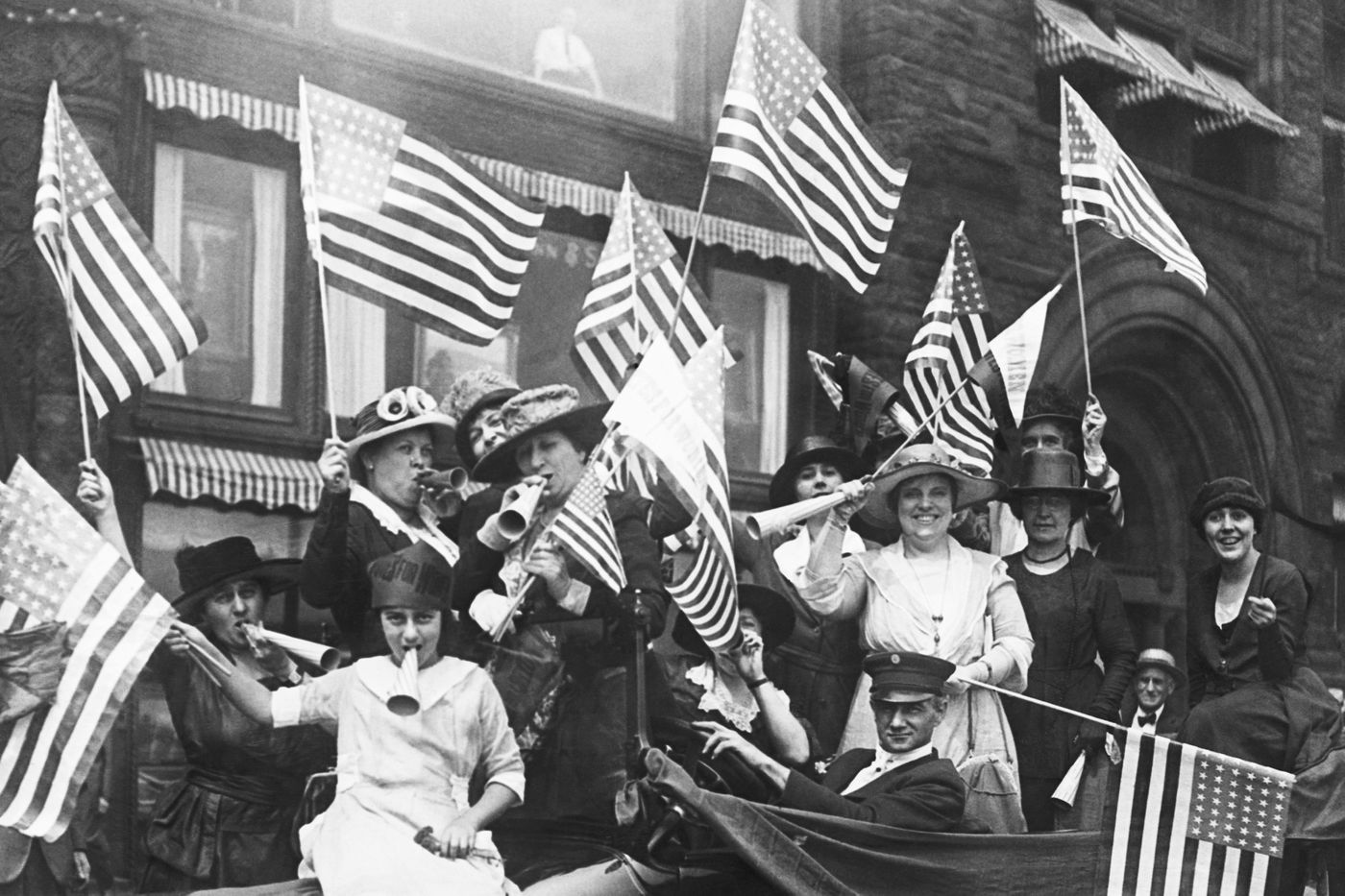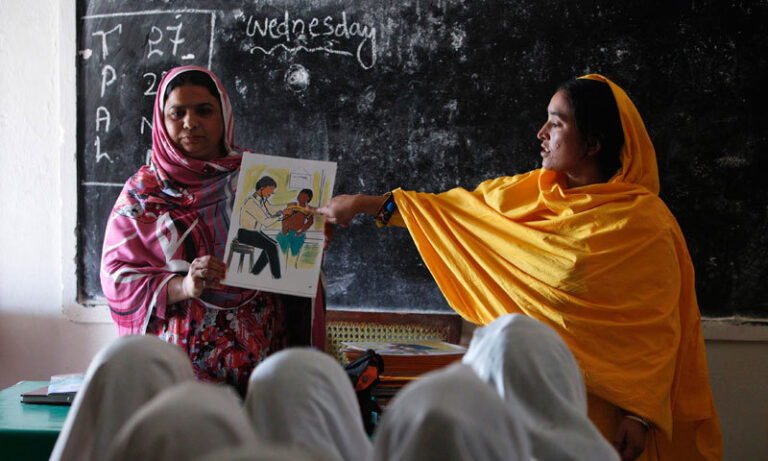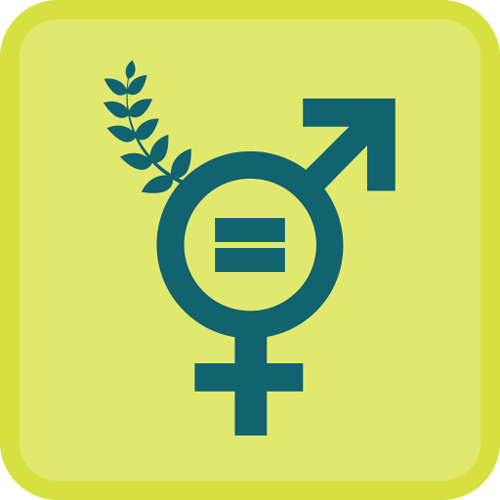Feminism in the United States
An Illustrated History of U.S. Feminism
By Tom Head
There have been multiple feminisms representing the efforts of women to live to their full humanity in a world shaped by and for men, but not capital-F feminism that has dominated the history of feminist thought.
Moreover, it tends to correspond with the goals of upper-class heterosexual White women who have traditionally been given, and still tend to have, disproportionate power to spread their message. But the movement is much more than that, and it dates back centuries.
1792 — Mary Wollstonecraft vs. The European Enlightenment
:max_bytes(150000):strip_icc():format(webp)/2641749-58b59d513df78cdcd874aac6.jpg)
European political philosophy centered on a conflict between two great, wealthy men in the 18th century: Edmund Burke and Thomas Paine. Burke’s Reflections on the Revolution in France (1790) criticized the idea of natural rights as a rationale for violent revolution; Paine’s The Rights of Man (1792) defended it. Both naturally focused on the relative rights of men.
English philosopher Mary Wollstonecraft beat Paine to the punch in her response to Burke. It was titled A Vindication of the Rights of Men in 1790, but she parted ways with both of them in a second volume titled A Vindication of the Rights of Woman in 1792. Although the book was technically written and circulated in Britain, it arguably represents the beginning of first-wave American feminism.
1848 — Radical Women Unite at Seneca Falls
:max_bytes(150000):strip_icc():format(webp)/feminism2-58b59d8b5f9b586046846f9f.jpg)
Wollstonecraft’s book represented only the first widely-read presentation of American first-wave feminist philosophy, not the beginning of the American first-wave feminist movement itself.
Although some women—most notably U.S. First Lady Abigail Adams—would agree with her sentiments, what we think of as the first-wave feminist movement probably began at the Seneca Falls Convention of July 1848.
Prominent abolitionists and feminists of the era, such as Elizabeth Cady Stanton, authored a Declaration of Sentiments for women that was patterned after the Declaration of Independence. Presented at the Convention, it asserted fundamental rights often denied to women, including the right to vote.
1851 — Ain’t I a Woman?
:max_bytes(150000):strip_icc():format(webp)/feminism3-58b59d855f9b586046846754.jpg)
The 19th-century feminist movement had its roots in the abolitionist movement. It was, in fact, at a global abolitionists’ meeting that the Seneca Falls organizers got their idea for a convention.
Still, despite their efforts, the central question of 19th-century feminism was whether it was acceptable to promote Black civil rights over women’s rights.
This divide obviously leaves out Black women, whose basic rights were compromised both because they were Black and because they were women.
Sojourner Truth, an abolitionist, and an early feminist said in her famous 1851 speech, “I think that ‘twixt the negroes of the South and the women at the North, all talking about rights, the white men will be in a fix pretty soon.”
1896 — The Hierarchy of Oppression
:max_bytes(150000):strip_icc():format(webp)/feminism4-58b59d825f9b58604684624d.jpg)
White men remained in control, partly because Black civil rights and women’s rights were set against each other.
Elizabeth Cady Stanton complained about the prospect of Black voting rights in 1865.
“Now,” she wrote, “it becomes a serious question whether we had better stand aside and see ‘Sambo’ walk in the kingdom first.”
In 1896, a group of Black women, led by Mary Church Terrell and including such luminaries as Harriet Tubman and Ida B. Wells-Barnett, was created out of a merger of smaller organizations.
But despite the efforts of the National Association of Colored Women and similar groups, the national feminist movement became identified primarily and enduringly as White and upper class.
1920 — America Becomes a Democracy (Sort Of)
:max_bytes(150000):strip_icc():format(webp)/feminism5-58b59d7e3df78cdcd874faf7.jpg)
As 4 million young men were drafted to serve as U.S. troops in World War I, women took over many jobs traditionally held by men in the United States.
The women’s suffrage movement experienced a resurgence that dovetailed with the growing antiwar movement at the same time.
The result: Finally, some 72 years after Seneca Falls, the U.S. government ratified the 19th Amendment.
While Black suffrage was not to be fully established in the South until 1965, and it continues to be challenged by voter intimidation tactics to this day, it would have been inaccurate to even describe the United States as a truly representative democracy prior to 1920 because only about 40% of the population—White males—were allowed to elect representatives.
1942 — Rosie the Riveter
:max_bytes(150000):strip_icc():format(webp)/feminism6-58b59d793df78cdcd874f289.jpg)
It’s a sad fact of American history that our greatest civil rights victories came after our bloodiest wars.
The end of enslavement came about only after the Civil War. The 19th Amendment was born after World War I, and the women’s liberation movement began only after World War II.
As 16 million American men went off to fight, women essentially took over the maintenance of the U.S. economy.
Some 6 million women were recruited to work in military factories, producing munitions and other military goods. They were symbolized by the War Department’s “Rosie the Riveter” poster.
When the war was over, it became clear that American women could work just as hard and effectively as American men, and the second wave of American feminism was born.
1966 — National Organization for Women (NOW) Founded
:max_bytes(150000):strip_icc():format(webp)/feminism7-58b59d733df78cdcd874e853.jpg)
Betty Friedan’s book The Feminine Mystique, published in 1963, took on “the problem that has no name,” the cultural gender roles, workforce regulations, government discrimination, and everyday sexism that left women subjugated at home, at church, in the workforce, in educational institutions and even in the eyes of their government.
Friedan co-founded NOW in 1966, the first and still the largest major women’s liberation organization. But there were early problems with NOW, most notably Friedan’s opposition to lesbian inclusion, which she referred to in a 1969 speech as “the lavender menace.”
Friedan repented of her past heterosexism and embraced lesbian rights as a non-negotiable feminist goal in 1977. It has been central to NOW’s mission ever since.
1972 —Unbought and Unbossed
:max_bytes(150000):strip_icc():format(webp)/feminism8-58b59d6e5f9b586046843cfb.jpg)
Rep. Shirley Chisholm (Democrat-New York) was not the first woman to run for nomination for U.S. president with a major party. That was Sen. Margaret Chase Smith (Republican-Maine) in 1964. But Chisholm was the first to make a serious, hard run.
Her candidacy provided an opportunity for the women’s liberation movement to organize around the first major-party radical feminist candidate for the nation’s highest office.
Chisholm’s campaign slogan, “Unbought and Unbossed,” was more than a motto.
She alienated many with her radical vision of a more just society, but then she also befriended infamous segregationist George Wallace while he was in the hospital after being wounded by a would-be assassin in his own run for president against her in the Democratic primaries.
She was completely committed to her core values and she didn’t care who she ticked off in the process.
1973 — Feminism vs. The Religious Right
:max_bytes(150000):strip_icc():format(webp)/feminism9-58b59d675f9b586046843139.jpg)
The right of a woman to terminate her pregnancy has always been controversial, mostly because of religious concerns regarding the belief that embryos and fetuses are human beings.
A state-by-state abortion legalization movement achieved some success during the late 1960s and the early 1970s, but in most of the country, and most notably the so-called Bible Belt, abortion remained illegal.
This all changed with Roe v. Wade in 1973, angering social conservatives.
Soon the national press began to perceive the entire feminist movement as being concerned primarily with abortion, just as the emerging Religious Right appeared to be.
Abortion rights have remained the elephant in the room in any mainstream discussion of the feminist movement since 1973.
1982 — A Revolution Deferred
:max_bytes(150000):strip_icc():format(webp)/feminism10-58b59d603df78cdcd874c5b5.jpg)
Originally written by Alice Paul in 1923 as a logical successor to the 19th Amendment, the Equal Rights Amendment (ERA) would have prohibited all gender-based discrimination at the federal level.
But Congress alternately ignored and opposed it until the amendment finally passed by overwhelming margins in 1972. It was quickly ratified by 35 states. Only 38 were needed.
But by the late 1970s, the Religious Right had successfully mounted opposition to the amendment based largely on opposition to abortion and women in the military. Five states rescinded ratification, and the amendment officially died in 1982.
1993 — A New Generation
:max_bytes(150000):strip_icc():format(webp)/feminism11-58b59d5b3df78cdcd874bdd9.jpg)
The 1980s were a depressing period for the American feminist movement. The Equal Rights Amendment was dead. The conservative and hyper-masculine rhetoric of the Reagan years dominated national discourse.
The Supreme Court began to drift incrementally to the right on important women’s rights issues, and an aging generation of predominantly white, upper-class activists largely failed to address issues impacting women of color, low-income women, and women living outside the United States.
Feminist author Rebecca Walker—young, Southern, African American, Jewish and bisexual—coined the term “third-wave feminism” in 1993 to describe a new generation of young feminists working to create a more inclusive and comprehensive movement.
2004 — This is What 1.4 Million Feminists Look Like
:max_bytes(150000):strip_icc():format(webp)/feminism12-58b59d585f9b5860468416ef.jpg)
When NOW organized a March for Women’s Lives in 1992, Roe was in danger. The march on D.C., with 750,000 present, took place on April 5.
Casey v. Planned Parenthood, the Supreme Court case that most observers believed would lead to a 5-4 majority striking down Roe, was scheduled for oral arguments on April 22. Justice Anthony Kennedy later defected from the expected 5-4 majority and saved Roe.
When a second March for Women’s Lives was organized, it was led by a broader coalition that included LGBT rights groups and groups specifically focusing on the needs of immigrant women, indigenous women, and women of color.
The turnout of 1.4 million set a D.C. protest record at that time and showed the power of the new, more comprehensive women’s movement.
2017 — Women’s March and #MeToo Movement
The Women’s March on Washington marked the full first day of Donald Trump’s presidency.
On January 21, 2017, more than 200,000 people rallied in Washington, D.C. to protest what they feared would be a Trump presidency that would endanger women’s, civil, and human rights. Other rallies were held across the nation and around the world.
The #MeToo Movement began to pick up a following later in the year as a response to sexual assault allegations against Hollywood producer Harvey Weinstein. It focused on sexual assault and harassment in the workplace and elsewhere.





